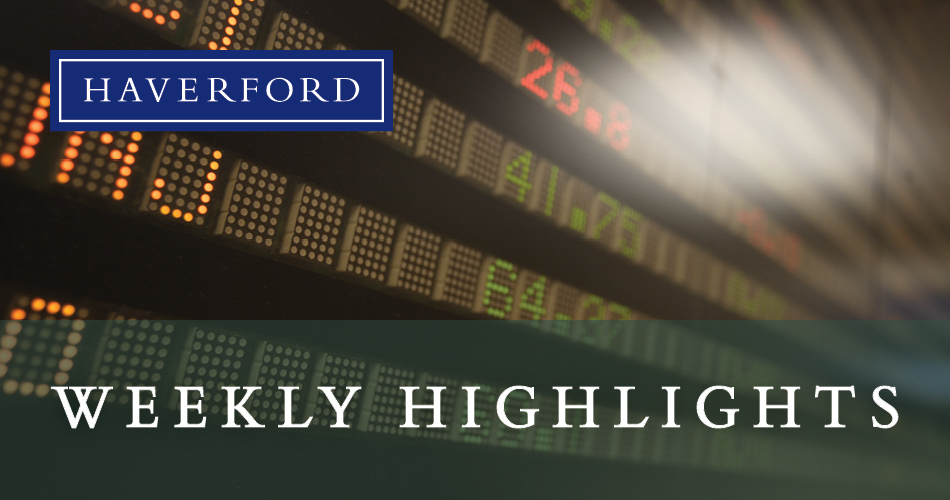As if the prior week wasn’t volatile enough, last week the S&P 500 closed at 2,919, down 0.46%. Though the path was far from a straight line.
On Monday, August 5, a combination of President Trump’s tariff threats and China’s perceived currency retaliation sent the S&P 500 down 3%, marking its worst day this year. By Thursday, the index had recouped most of the losses as markets found comfort in Chinese officials taking measures to stabilize the currency with the index pulling back modestly on Friday. It is important to note that August is historically a notoriously volatile month, as liquidity and news flow gets light with all the summer travel. We saw the VIX index of equity market volatility—dubbed “Wall Street’s fear gauge—spike on Monday to its highest level since early January when the market was recovering from the December blow up, easing back to levels only modestly above its one year average.
At the start of the week, the U.S. Treasury officially designated China a “currency manipulator” for the first time since 1994, after Beijing allowed the Yuan to fall below the 7 Yuan per U.S. Dollar threshold, sending ripples through financial markets and escalating the already tense trade war. Although the designation is largely symbolic, we have seen a number of financial media report the lack of support for the move by the International Monetary Fund (IMF) and Group of 7 countries (G-7), further diminishing the tangible impact of the decision.
At Haverford, we continue to believe both sides have a long list of reasons to come to a compromise or deal, although the timeline remains uncertain.
For China, the consequences of the trade war could be dire, as it compounds existing problems in the domestic economy, including high levels of corporate debt. In addition, as corporations shift supply chains out of the country to competitors in the region, the ramifications for long-term growth and market share cannot be underestimated. With that said, China does not have the same urgency the U.S. faces. With the upcoming 2020 presidential election and Joe Biden—arguably a trade dove—leading the polls, China is incentivized to drag their feet.
For the United States, existing tariffs have largely impacted businesses who have subsequently found innovative ways to reduce its impact. However, the 10% tariff rate on the remaining $300 billion of imports starts to venture into consumer goods from iPhones to apparel. As we head into the holiday season, the impact would undoubtedly be undesirable for both sides. Ironically, if the September 1 threat were to materialize, we expect the impact will be more pronounced in sentiment, as the direct price impact at the shelf is reduced by the weaker Yuan.
The next big trade catalysts will be whether the U.S. Commerce Department provides Huawei (a Chinese technology company) waivers by the 8/19 deadline. A number of strategists have speculated that if the United States hands out these waivers by the deadline, it is possible China will make some high-profile agricultural purchases to placate the United States, which could result in the September 1 deadline being pushed back or threat rescinded. In the tariff pronouncement, the President provided a relatively low bar by which to postpone the levy, which makes this a possibility.
In the fixed income world, bond yields continue to fall, with the 10-yr U.S. Treasury falling below 1.7% during the week for the first time in 3 years, reviving worries of a sustained yield curve inversion. Meanwhile, the percentage of negative yielding debt continues to soar, hitting $15.6 trillion, about double the amount last year at a little over $7 trillion.
While falling yields have provided a tailwind to fixed income valuations. It is going to be difficult for stock prices to move meaningfully higher without a de-escalation of trade tensions.
